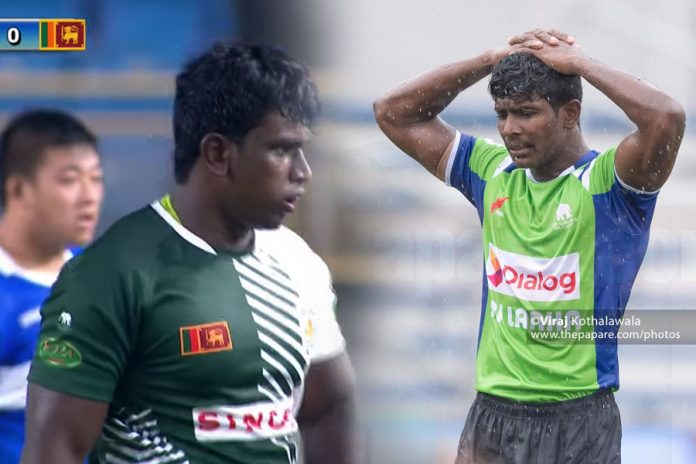The headline tells you everything you need to know. Possibly and, everything you may already know. Almost everything. I don’t know which part of it came first or comes first, the plan or the failure. In the end, it did not matter as the final result remained the same.
In life, you learn from your failures. That said if anyone is going to fail, you need to fail forward and fail for what you did, as opposed to, for what you didn’t do. This competition being one of those disheartening and backward failures. It was largely due to inaction (off the field) and not, actions on it which eventually cost the SL U19s their campaign.
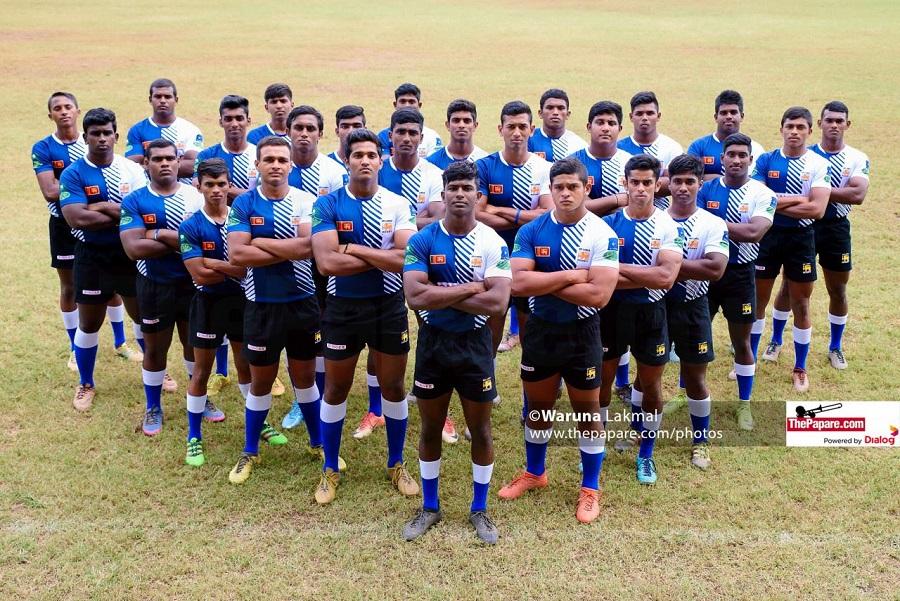
It was a bitterly disappointing trifecta of games for Sri Lanka’s most competitive, age grade-representative level at sport. The under 19s or 1st XV rugby team bubbling with potential came home empty handed. What’s worse, the junior Tuskers are now relegated to the second tier for 2019. Inglourious and arguably–unfair.
That said, sport may remember those who fought bravely but never pay out a dividend for those who– “also ran”. They were brave but on the books they merely “also ran”. It would be easy to lay blame on this team. Its players and coaches but, based on their preparation or the lack of it, they looked destined for a failure.
Sri Lankan sport and those who administer it are very good at planning press conferences, arranging mainstream media to write advertorial style content etc. Unfortunately, when it comes to planning and preparing a team to win competitions, they lack the same intensity or panache.
The KY gel like chemistry played out for a TV camera is nowhere to be seen. It is most unfortunate and ends up in a limp attempt to gain a result on the field. It is endemic of an amateur mind set in an openly professional era which started many decades ago.
The end game is of course– a flat, pan cake like methodology which is more about firefighting than any long-term vision.
So, all that aside, given that the junior Tuskers failed to win a single game from their three encounters– how and where did it all go wrong?… what were the bright sparks and surely, it can’t be all doom and gloom? It wasn’t. Well, sort of.
Read More: Sri Lanka broken and RELEGATED
Ultimately though, any bravery and against the odds performances were doused by one singular market force. An epidemic called deficiendi consilia capiendi. Failure to plan.
Two out of three encounters where they went close and a third, against defending champions Hong Kong, rag dolled into submission. Against well-nourished and accomplished, skilled and some semi-skilled footy players for their age bracket. The irony of it all, that one of this teams’ sponsors being Fonterra. A corporate which sells some the world’s finest nourishment.
So, let’s take a closer look at some of the key forces and factors which played its hand in where this team ended and how it all unfolded.
- Early settlers
Hosts of the competition, Chinese Taipei started their prep in early August. Such was their intent and focus. That was a solid 16 weeks of training as a wider group. It showed. It clearly showed. Their ability to be extraordinary with a bunch of ordinary players was exemplary. All they did was make full use of 16 weeks to add an “extra” to the word ordinary.
They had done their homework, studied video, circulated memos and planned for each and every opponent. That I can vouch for and confirm, without a shred of a doubt.
Sri Lanka on the other hand– on the back of an incredible schools’ season proper and Knock Out competition, eased out of their collective form– sat on their laurels for a good couple of months. They then haphazardly organized two “trial games”, which were put back due to most of the eligible playing for the local mercantile sevens. The glamour corporate gig in a different format. It is where most dollars and bills are traded– for players, coaches and support staff alike.
You can’t really blame them as there was enough cash on offer, so Christmas came early. It is after all a wonderful career prospect to be a professional rugby player or “coach”. Especially, straight after leaving school when most of that age bracket will have to slave for much lesser and longer.
So, it’s crystal clear how disjointed, disingenuous and flawed the initial process was. The frustration of all this –that plenty in the “know,” knew about this and did nothing to find a way around it. The old saying of an early bird gets the worm comes to mind. In Sri Lanka’s case the bird flew and catch up mode was a challenge too great. Four weeks of prep against the level of teams they played just didn’t cut it.
There should have been a process to cluster the form players on the back of the school’s season into a training pool, without delay and start the training process. Allowing in between to accommodate for any “professional” commitments. Clearly– no such process exists or existed.
- Trial from error
Coming off a stellar schools’ season where three top teams, namely, Royal, St Joseph’s and St Peter’s shared the spoils. It is simple logic that you pick your squad on, in season or “run on form”. If that is too difficult, making some footnotes or to really simplify it, reading ThePapare.com team of the year would have told the selectors what they need to know.
For some archaic reason, Sri Lankan rugby is hell bent on having “trials”. It does have its merits and gives everyone a fair shot if staged accurately. Problem though, when it’s two months too late and a good chunk of those who were picked for the wider training group never got a decent “trial”. This simply killed its objective and was a further waste of time.
Moreover, the trial games could have been split into four quarters of twenty minutes each (old fashioned- chuckers), allowing for ample time so everyone got a good run and the selectors/coaches saw their suggested combinations.
Contrast all that to Hong Kong. They as a union came off their U19 premiership and picked on its merit. It was and proved to be a potent form-line as they duly saluted and went back to back as champions. Again, all this was well documented in my previous articles.
So, it would be fair to say that the local trial method is full of error and it is time the selectors looked for a more sound methodology. Picking on, in season or run on form.
- Size matters
The above stays very true with anything to do with contact sport. This age grade is no exception. Champions Hong Kong, who have a good assortment of expats and non-locals by birth, fielded several oversized players. That is of course a relative statement but by “Asian” standards, they were definitely XXXL.
Whilst they were not the most skilled–in fact, that distinction would go to Sri Lanka, these large youngsters barreled through and past at will. Their game plan was simple. Win the ball and set up three-man pods across the park, where they rolled out the heavy artillery.
In the SL V HK game, it was admirable courage from the junior Tuskers who buffered themselves against these large young men and eventually, the body contact and collisions took its toll. The missed tackles arrived and with it tries against.
It worked. Smashing through would be tacklers at will, the flood gates opened. To counter this–SL needed heavy artillery. Mid-range rocket power alone wasn’t going to suffice. In both attack and defense. It just didn’t.
Here in lies several errors when it came to selections or non-selections. None more so than the omission of Maliyadeva mid fielder– Lahiru Daulugalla. The 6 foot 2 hulking and imposing figure would have been an ideal ball carrying option as well as defending the line. Which this side never really had.
Read More: Sri Lanka Rugby U19 touring squad to Taipei finalized
There were ball carriers but a lack of sheer physicality, which would give you gain line meterage and front foot ball was missing. So, where was he?… Contracted with Kandy S.C, he made the wider training group but did NOT make the final cut for the junior Tuskers. In my view– a tragic miss.
The best example anyone could learn from is how Hong Kong utilized a number of bigger players who were of lesser skill but had a simple job description. Take the ball forward and break gain line. They did so and at times, looking rather ungainly. Wrapping faster and more skilled men on out wide channels, this simple formula worked a treat. It wasn’t rocket science but one, which eventually and easily won them the title.
If you bang on a door, long and hard enough, it will fall apart. Picking your team on who you play and how you play them– is a no brainer. Excuse the pun.
- Tactical misfires
Using forwards with close-quarter pick and go’s with driving mauls did not work well against the Asian junior premiership contenders. The opposition was too well-prepped and physically robust.
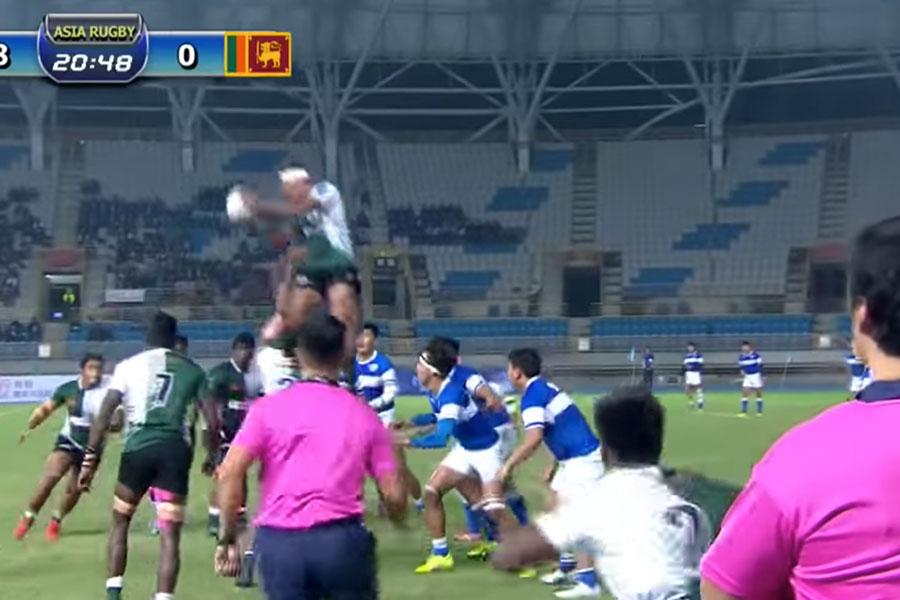
Starting with hosts Taipei, given the sheer possession SL had, their efforts were largely negated by a well-organized and compressed defence on either side of the ruck. As the phases piled up and frustrations grew, so did the errors and turnovers. It was eventually the undoing of all that hard work. It was admirable but a dead-end street.
Further, an unwillingness to transfer the point of contact wider from the defensive fringe where the opposition, readied and waited was costly. It was only a matter of time before they targeted a weaker ruck and isolated a ball carrier.
In spurts, when the ball did eventually see some air or travel into the hands of a potent three-quarter line, it unleashed the magic. Unfortunately, the memo didn’t get across fast enough to the coaching staff to alter their plans.
Janindu Dilshan and Keshan Kavinda were in white hot form as they stepped their way through, pricking their ears and raced to the try line. It was nothing short of razzle dazzle which scorched the turf and left almost every single team stunned and grasping at thin air. There was no comparison when this back division was in full cry.
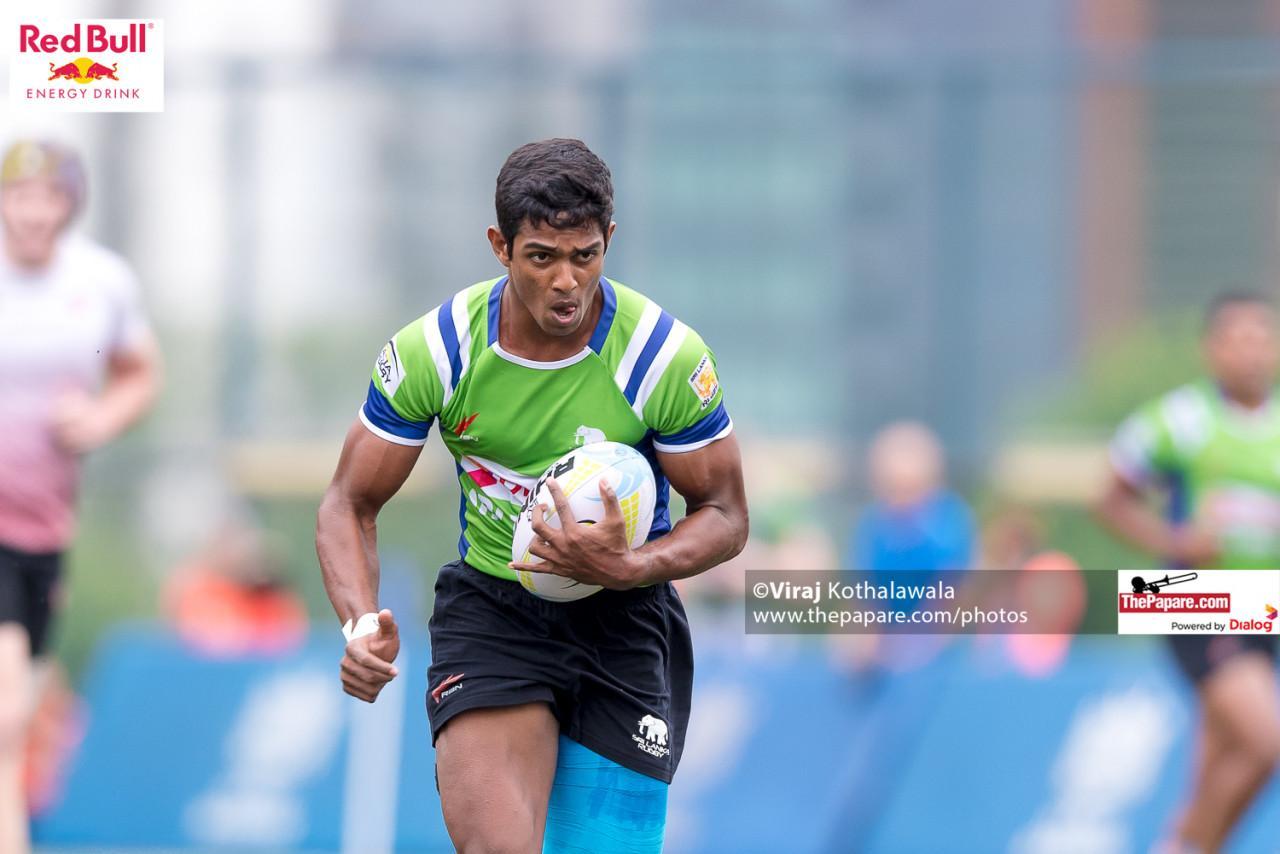
Not seeing enough of it was a disappointment and a let-down. This is the job of the coaching director. Currently, non-existent.
- A notorious distraction
It is now common and public knowledge much thanks to a well-documented episode involving the disgraced, former SLU19s skipper Gemunu Chethiya. Without going into too much detail and prejudicing what should be a swift and impartial inquiry, his actions which broke team protocol resulted in him being sent home early.
This would have been a major distraction and dilemma for team management as he, the ace of spades in this group was central to its attacking patterns. When your best player is unavailable and due to acrimonious circumstances, it would have been a bad situation for the team to be in. Regardless they put on a tremendous showing and we can only imagine “what if”. It was a 3-point loss to a much fancied Korea (who beat champions Hong Kong earlier in play), bathed in agony.
This brings us to a much bigger issue. That being, how best are these youngsters on tour managed and better yet, briefed and advised prior to taking wing? Again, this is an issue for those who govern the sport to put in place.
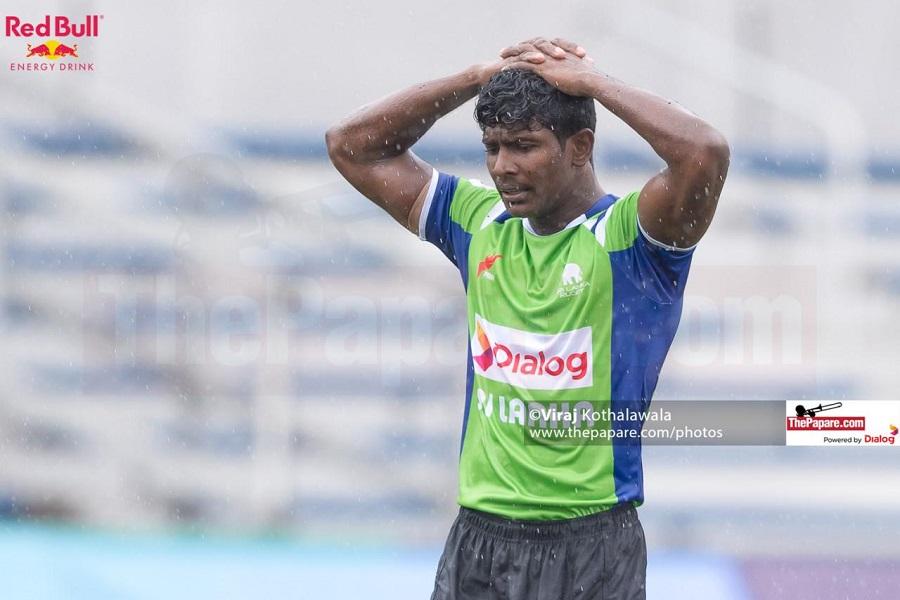
All that aside, unfortunately, the story of this campaign and what it will be remembered for is GC being booted out from the competition. A heavy price to pay for both him and his team.
- Parting shots
It is hard not to be critical of this campaign as it was almost doomed before, it even began. Purely for the reason that SL were the least prepped and “freshened up” for too long with a yawning break in between (schools season to trail to training pool). It is one for the governing bodies to sort out through high performance management.
This means that both SLR and the schools section need to find a clear-cut process on how best to manage, what is this country’s most competitive and sought-after sporting competition. There is plenty of potential to be very competitive at the Asian level (at least) but it needs far more planning and execution to be given much better odds for success.
Contrary to the popular belief, most of this will not require more money or additional resourcing, it just needs a change of thinking and being clear about what the processes should be. When there aren’t any, the cost of changing that is next to nothing. It is a matter of changing your thought patterns. Planned and designed systems as opposed to default mode happy go lucky.
Also Read: Tubthumping and the Junior sevens
Another revelation I need to state, is that after going through almost 4 seasons of SL-junior rep footage, the data mining and trends clearly suggests that they respond and play their best when playing patterns are to be as ad-hoc as possible. It is NOT to suggest that it’s an all out game of touch rugby– instead, limiting the structured phase play and then, throwing the kitchen sink at the opposition by running the width or length of the field (in some instances as seen). Fast, fractured-broken play from situations which need to be rehearsed such as quick throw ins, quick taps and audacious line breaks seem the way to go.
As a rugby culture, Sri Lanka just don’t have the patience and perseverance to be disciplined enough to play phase after phase. Thereby create from designed playing patterns. It’s just not in our DNA to do. Therefore, doing what best suits these teams will get you the best results.

